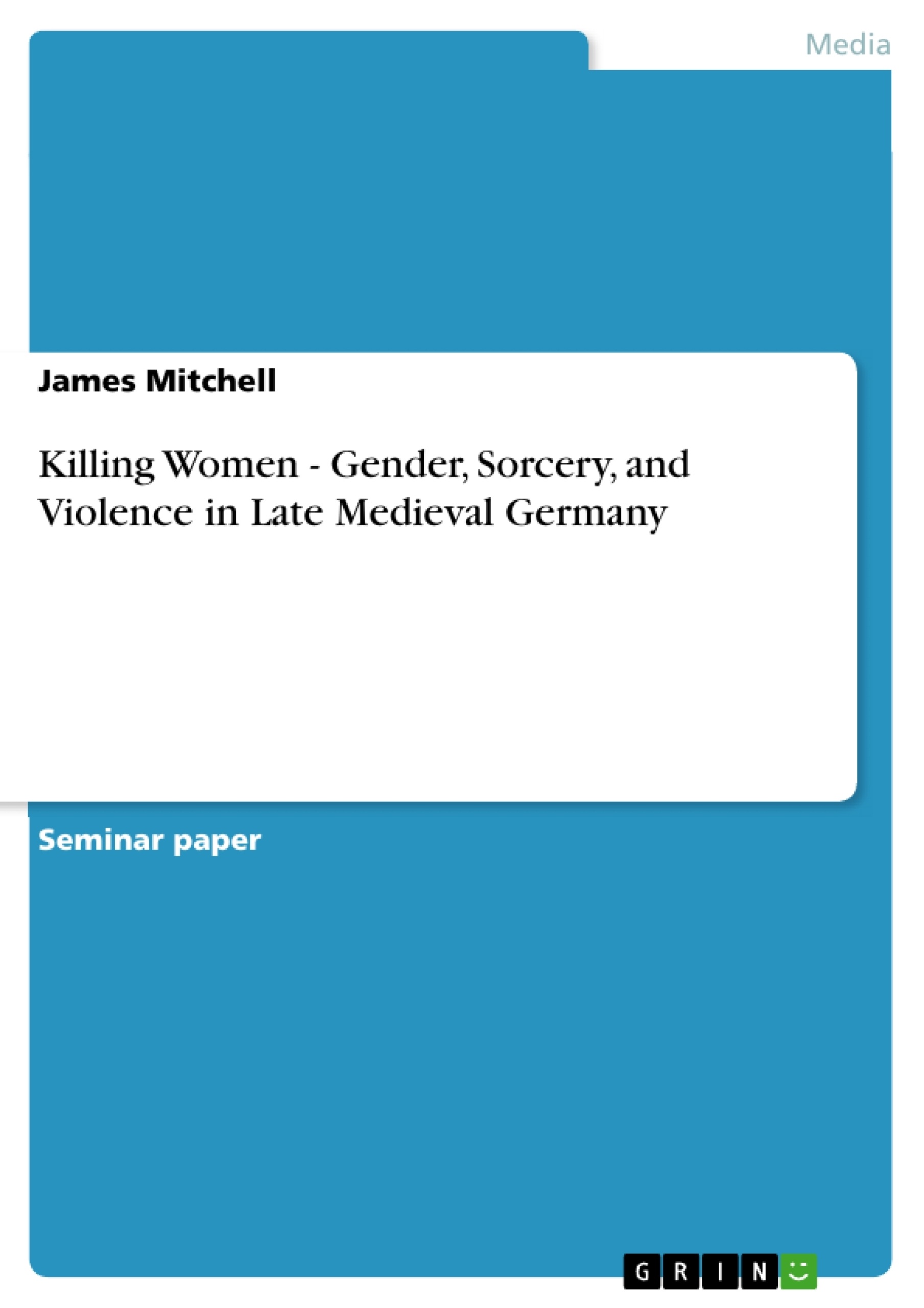In this essay we will examine in detail the process by which witchcraft became deliberately and definitively feminized in fifteenth-century Germany, and we will also show how contemporary artists of the time made use of the prevailing popular notions about witches to depict them in accordance with the “evil old woman” archetype. We will also see how these women subjects became eroticized through their depiction as young seductresses and as participants in diabolical sexual extravaganzas of various kinds. Finally we will show how the witchcraft fright presented the same artists with the opportunity of illustrating women in sexually suggestive, not to say pornographic poses, made publicly permissible and even fashionable for the first time in the history of German art.
Inhaltsverzeichnis (Table of Contents)
- Introduction: The “Cumulative Concept of Witchcraft”
- The Feminization of Witchcraft
- The Witch-Hunt in Art: Images of Witchcraft
- The Witches’ Sabbath and the Eroticization of the Witch
- The Witch Hunt and the Rise of the Pornographic Image
- Conclusion: The Cultural Significance of the German Witch Hunt
Zielsetzung und Themenschwerpunkte (Objectives and Key Themes)
This essay explores the process by which witchcraft became feminized in 15th-century Germany. It examines how artists of the time used prevailing notions about witches to portray them, focusing on the transition from the "evil old woman" archetype to a depiction of young, seductive women. Additionally, the essay investigates how these depictions became eroticized and contributed to the emergence of pornographic imagery in German art.
- The development of the "cumulative concept of witchcraft" during the 15th century.
- The role of theoretical writings in defining and promoting the idea of women as the primary practitioners of witchcraft.
- The influence of folklore and artistic representations on the evolving image of witches.
- The connection between the witch hunt and the emergence of pornographic imagery in German art.
- The cultural significance of the German witch hunt.
Zusammenfassung der Kapitel (Chapter Summaries)
- Introduction: The “Cumulative Concept of Witchcraft”
- The Feminization of Witchcraft
- The Witch-Hunt in Art: Images of Witchcraft
- The Witches’ Sabbath and the Eroticization of the Witch
- The Witch Hunt and the Rise of the Pornographic Image
This chapter outlines the origins and evolution of the concept of witchcraft in medieval Europe. It describes how, during the 15th century, the concept of witchcraft became more elaborate and included specific beliefs about witches, such as their ability to fly and their involvement in the witches' sabbath.
This chapter examines the reasons behind the feminization of witchcraft. It explores the influence of theoretical writings like the *Formicarius* and the *Malleus Maleficarum* and discusses the historical and cultural context that contributed to the perception of women as primary perpetrators of witchcraft.
This chapter focuses on the depiction of witches in art during the 15th and 16th centuries. It analyzes how artists incorporated prevailing notions about witches into their works, showing the shift from a portrayal of older, haggard women to a more sexually suggestive representation of young, alluring figures.
This chapter delves into the concept of the witches' sabbath and its portrayal in art. It explores how artists used depictions of the witches' sabbath to eroticize the image of the witch, presenting them as participants in sexualized rituals and activities.
This chapter examines the connection between the witch hunt and the emergence of pornographic imagery in German art. It argues that the witch hunt provided a context in which artists could depict women in sexually suggestive and explicit ways, contributing to the rise of pornography in the art world.
Schlüsselwörter (Keywords)
The main keywords and focus topics of this text are: witchcraft, gender, sorcery, violence, late medieval Germany, feminization, diabolism, heresy, art, images, witches' sabbath, eroticism, pornography, cultural significance. The essay explores the historical and cultural context of the witch hunt, focusing on the specific role of gender, artistic representation, and the evolution of the concept of witchcraft.
- Quote paper
- James Mitchell (Author), 2008, Killing Women - Gender, Sorcery, and Violence in Late Medieval Germany, Munich, GRIN Verlag, https://www.hausarbeiten.de/document/161026


